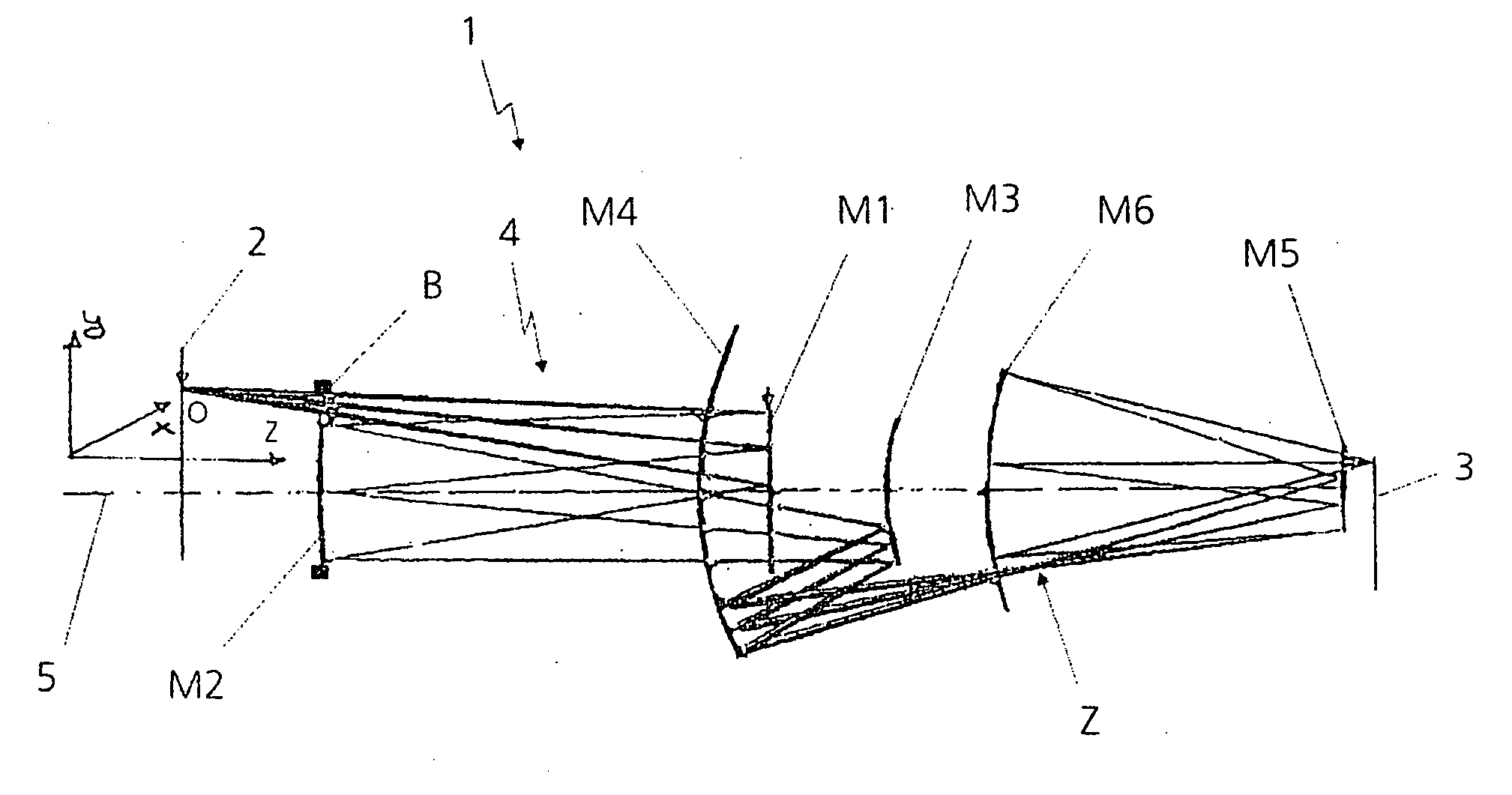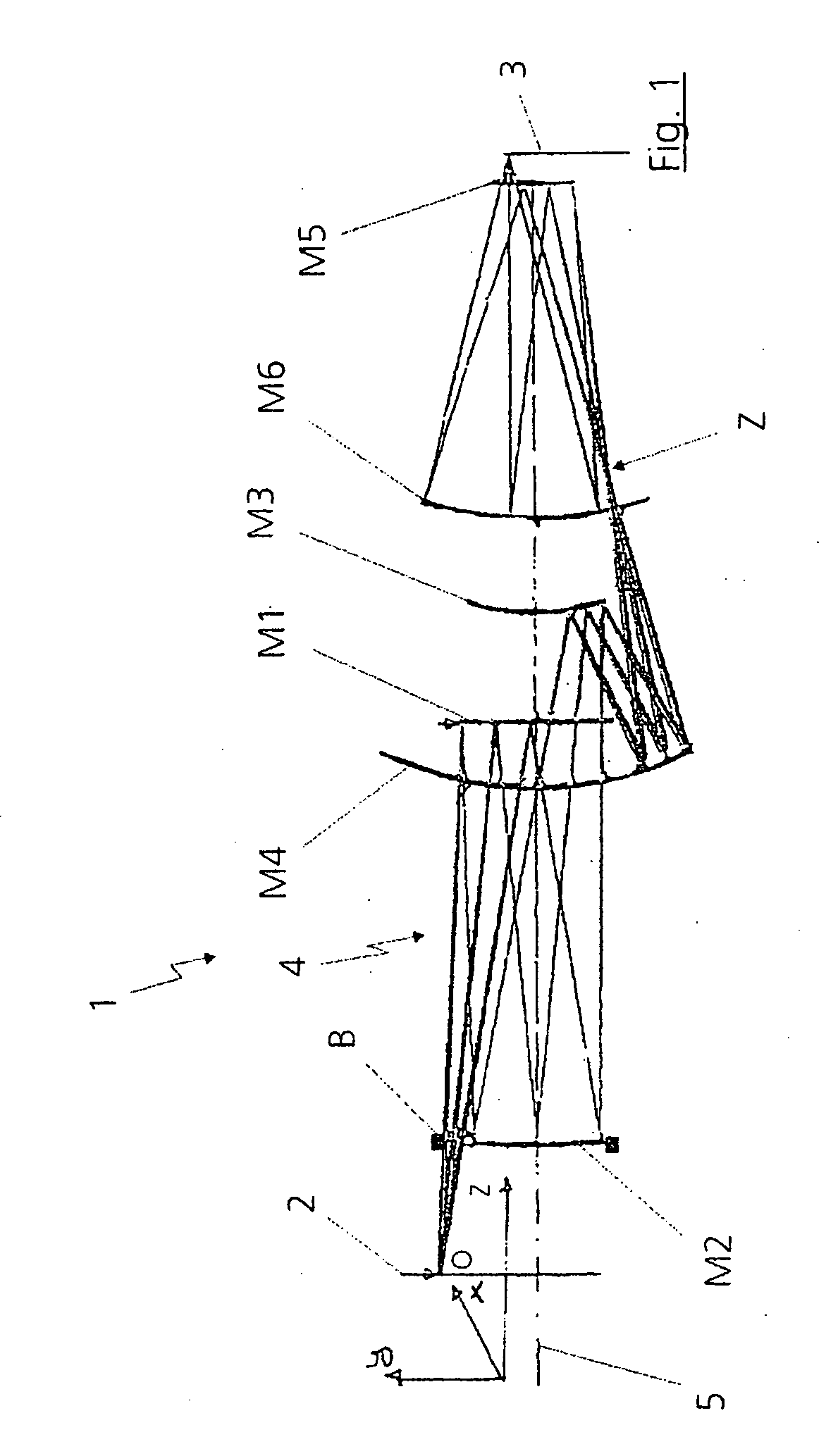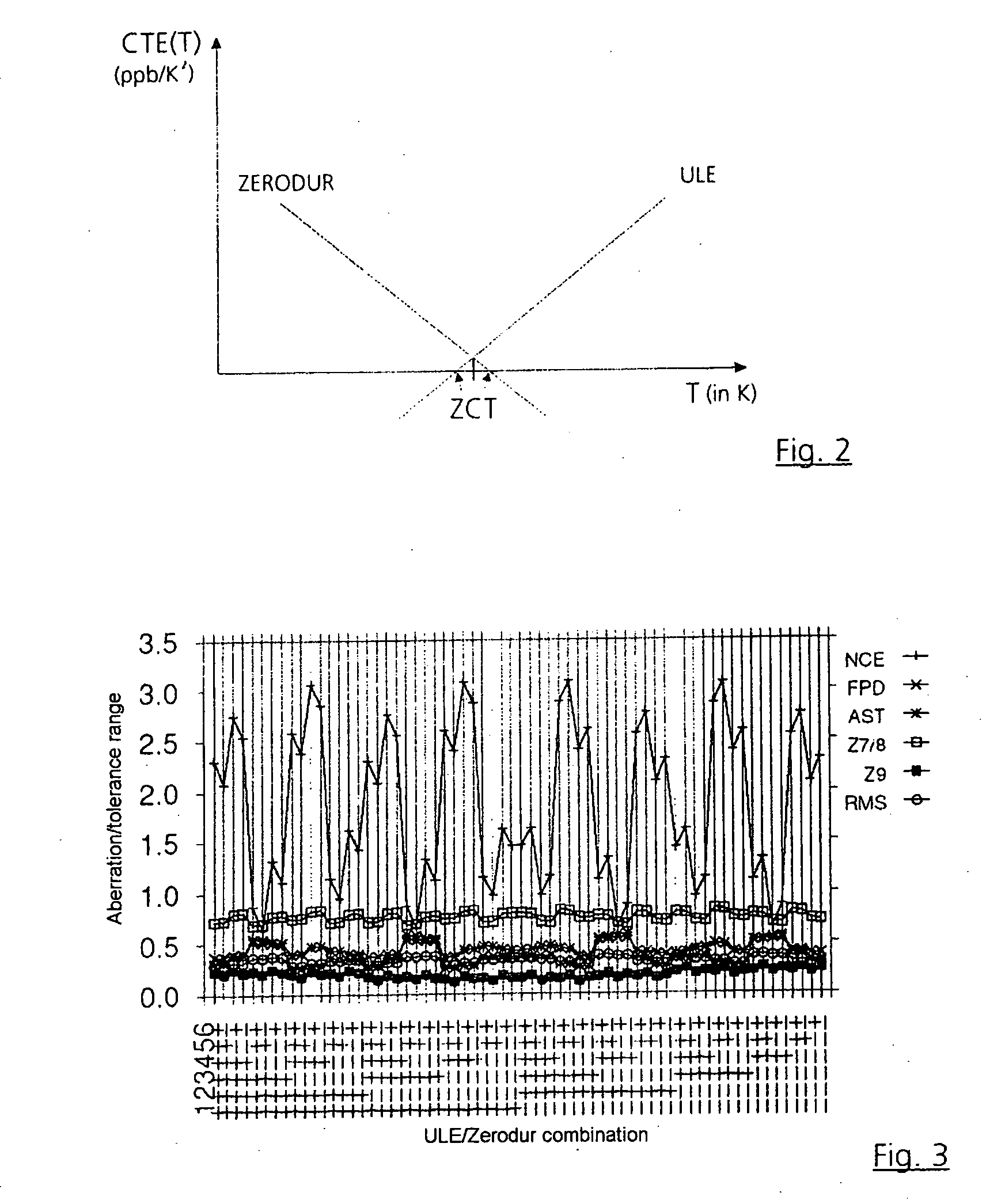Euv projection lens with mirrors made from material with differing signs for the rise in temperature dependence of the thermal expansion coefficient around the zero transition temperature
a technology of thermal expansion coefficient and projection lens, which is applied in the field of projection objective, can solve the problems of reducing the imaging quality, limiting the resolution limit of the overall system, and scattering light, and achieves the effect of optimizing the characteristic of scattering light and overall imaging quality
- Summary
- Abstract
- Description
- Claims
- Application Information
AI Technical Summary
Benefits of technology
Problems solved by technology
Method used
Image
Examples
Embodiment Construction
[0027]FIG. 1 shows an exemplary 6-mirror projection objective 1, as known from the prior art, for example in accordance with DE 100 37 870 A1, when used in the EUV region with wavelengths λ2. Here, the object O to be imaged constitutes a mask or a reticle in lithography. The object O is imaged into an image plane 3 via a first mirror M1, a second mirror M2, a third mirror M3, a fourth mirror M4, a fifth mirror M5 and a sixth mirror M6. In lithography, a wafer is arranged in the image plane 3, for example. The six mirrors M1, M2, M3, M4, M5 and M6 are aspheric mirrors, the first mirror M1 being designed as a convex mirror.
[0028] A diaphragm B restricts the beams 4 traversing the system 1. Here, the diaphragm B is located directly on the second mirror M2 or in the direct vicinity of the mirror M2. The overall system is arranged in a fashion centered relative to an optical axis 5, and has a telecentric beam path in the image plane 3. Furthermore, as is clearly evident in FIG. 1, an in...
PUM
 Login to View More
Login to View More Abstract
Description
Claims
Application Information
 Login to View More
Login to View More - R&D
- Intellectual Property
- Life Sciences
- Materials
- Tech Scout
- Unparalleled Data Quality
- Higher Quality Content
- 60% Fewer Hallucinations
Browse by: Latest US Patents, China's latest patents, Technical Efficacy Thesaurus, Application Domain, Technology Topic, Popular Technical Reports.
© 2025 PatSnap. All rights reserved.Legal|Privacy policy|Modern Slavery Act Transparency Statement|Sitemap|About US| Contact US: help@patsnap.com



